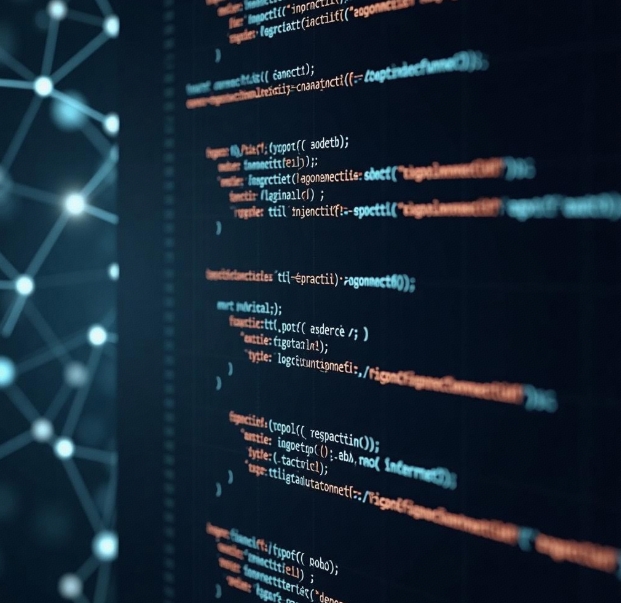How to Implement Decentralized Finance (DeFi) Applications Through DApp Development
- latest articles
- 1.DApp Development & Customization: Merging Diverse Market Needs with User Experience 2.Analysis of the Core Technical System in DApp Project Development 3.How to achieve cross-chain interoperability in Web3 projects? 4.How does the tokenization of points reconstruct the e-commerce ecosystem? 5.How to Set and Track Data Metrics for a Points Mall? 6.What is DApp Development? Core Concepts and Technical Analysis 7.Inventory of commonly used Web3 development tools and usage tips 8.Development of a Distribution System Integrated with Social E-commerce 9.Six Key Steps for Businesses to Build a Points Mall System 10.What is DApp Development? A Comprehensive Guide from Concept to Implementation
- Popular Articles
- 1.Future Trends and Technology Predictions for APP Development in 2025 2.Analysis of the DeFi Ecosystem: How Developers Can Participate in Decentralized Finance Innovation 3.From Zero to One: How PI Mall Revolutionizes the Traditional E-commerce Model 4.DAPP Development | Best Practices for Professional Customization and Rapid Launch 5.Recommended by the Web3 developer community: the most noteworthy forums and resources 6.From Cloud Computing to Computing Power Leasing: Building a Flexible and Scalable Computing Resource Platform 7.How to Develop a Successful Douyin Mini Program: Technical Architecture and Best Practices 8.Shared Bike System APP: The Convenient Choice in the Era of Smart Travel 9.How to Create a Successful Dating App: From Needs Analysis to User Experience Design 10.From Design to Development: The Complete Process of Bringing an APP Idea to Life
With the development of blockchain technology, Decentralized Finance (DeFi) has become a major trend in the financial sector. The core idea of DeFi is to use blockchain technology to provide financial services without intermediaries, achieving trustlessness and transparency through smart contracts and decentralized applications (DApps). As the foundation of decentralized applications, DApps have played a significant role in the DeFi space. Through DApp development, developers can build a decentralized financial ecosystem offering services such as lending, trading, and insurance.
This article will start from the definition of DApps, explain the basic concepts and applications of DeFi, and provide an in-depth analysis of how to build DeFi applications through DApp development, including the technology stack, development process, common DeFi application scenarios, as well as the challenges faced and future prospects.
I. Overview of Decentralized Finance (DeFi)
Decentralized Finance (DeFi) is a financial service system built on blockchain technology, particularly on smart contract platforms like Ethereum. Unlike traditional financial systems that rely on intermediaries such as banks and securities companies, DeFi provides peer-to-peer (P2P) financial services to users through smart contracts and decentralized protocols. These services include, but are not limited to:
Decentralized Lending: Users can directly borrow or lend without the need for traditional banking intermediaries.
Decentralized Exchanges (DEX): Allow users to exchange assets directly without relying on centralized exchanges.
Stablecoins: Used to stabilize cryptocurrency volatility, typically pegged to fiat currencies, such as USDT, DAI, etc.
Decentralized Insurance: Provide insurance services to users through smart contracts, automating the claims process.
Liquidity Mining and Yield Farming: Users earn returns by providing liquidity, with incentive mechanisms managed by smart contracts.
The common characteristic of these applications is that, through the decentralized nature of blockchain technology, they reduce reliance on traditional financial institutions and enhance the transparency, efficiency, and accessibility of financial services.
II. Basic Concepts of DApps
DApp (Decentralized Application) refers to an application that runs on a blockchain or distributed network. DApps have the following key characteristics:
Decentralization: DApps run on a blockchain backend, do not rely on a single server, and eliminate traditional intermediaries and centralized control.
Open Source: DApp code is typically open source, allowing anyone to review, modify, and use it.
Smart Contract Driven: The core functionality of DApps is usually implemented by smart contracts, which are self-executing programs running on the blockchain.
Cryptocurrency Support: DApps typically integrate cryptocurrency payment functions, supporting users in cryptocurrency transactions or asset management.
In the DeFi ecosystem, DApps are the core tools for implementing decentralized financial services. Through DApps, users can directly interact with the blockchain and participate in decentralized financial activities.
III. Technology Stack for Building DeFi Applications via DApp Development
DApp development involves not only front-end and back-end technologies but also the writing and deployment of blockchain and smart contracts. Below is the commonly used technology stack for building DeFi applications.
1. Blockchain Platforms
DeFi applications are typically built on blockchain platforms that support smart contracts, with Ethereum being the most common. Besides Ethereum, there are other blockchain platforms that also support smart contracts, such as:
Solana: Known for its high speed and performance, suitable for building high-throughput DeFi applications.
Binance Smart Chain (BSC): Compatible with Ethereum smart contracts, with low transaction fees and rapid ecosystem development.
Polygon: As a Layer 2 scaling solution for Ethereum, it offers faster transaction confirmation times and lower fees.
2. Smart Contract Programming Languages
Smart contracts are the core part of DApps, and the logic of DeFi applications is usually implemented through them. The most commonly used smart contract programming language is Solidity, which was developed for the Ethereum platform. Other blockchain platforms may use different smart contract languages; for example, Solana uses Rust or C.
The advantages of Solidity lie in its extensive community support, rich documentation, and toolchain, but it also has some security issues, requiring developers to pay special attention to code security audits.
3. Front-End Development Frameworks
DApp front-end development typically uses traditional web development frameworks such as React, Vue.js, or Angular. At the same time, DApps need to interact with the blockchain, usually using JavaScript libraries like Web3.js or Ethers.js.
These libraries allow front-end applications to interact with the blockchain through users' crypto wallets (such as MetaMask), submitting transactions, calling smart contract functions, and performing other operations. The main task of the front-end is to provide a good user experience, helping users easily interact with DeFi protocols.
4. Wallet Integration
The core of decentralized applications is that users can control their own assets, and wallets are the medium for interacting with the blockchain. Common DApp wallets include:
MetaMask: A browser extension supporting Ethereum and compatible chains, allowing users to directly manage assets and conduct transactions.
Trust Wallet: A mobile wallet supporting multiple blockchains and crypto assets, suitable for DeFi applications.
5. Back-End Technologies
Although DApps themselves are decentralized, the development process may still require certain centralized back-end services, such as data storage and processing. In such cases, IPFS (InterPlanetary File System) can be used to store decentralized data, or tools like The Graph can be used to index blockchain data, providing more efficient query services.
IV. DApp Development Process
Developing a decentralized finance (DeFi) application typically involves the following steps:
1. Requirements Analysis and Design
First, developers need to clarify the functional requirements of the DApp. This includes selecting the type of DeFi application (lending, trading, insurance, etc.) and defining the core functionality and user experience.
2. Smart Contract Development
Smart contracts are the core of DApps. Developers need to write appropriate smart contracts based on the requirements of the DeFi application. For example, when building a decentralized lending platform, functions such as borrowing, repayment, and interest calculation need to be implemented. Smart contracts are usually written in Solidity and thoroughly tested on testnets.
3. Front-End Development and Wallet Integration
Front-end developers need to create the user interface for the DApp, ensuring users can easily interact with the smart contracts. They connect to the blockchain via Web3.js or Ethers.js to implement functions like transaction submission and account management. Additionally, integrating wallets like MetaMask allows users to conveniently perform fund operations.
4. Testing and Security Audits
DeFi applications require particular attention to security. Since DeFi platforms often involve user funds, any vulnerability or attack could lead to significant losses. Therefore, developers must conduct comprehensive unit testing, integration testing, and professional security audits on smart contracts.
5. Deployment and Launch
After completing testing and security audits, developers can deploy the smart contracts to the mainnet and launch the front-end application. Once deployed, DApp users can access and interact with it via browsers or mobile devices.
V. Common Scenarios for DeFi Applications
1. Decentralized Exchanges (DEX)
Decentralized Exchanges (DEX) are one of the most common types of DeFi applications. Users can exchange cryptocurrencies through DEXs without relying on centralized exchanges. Uniswap, SushiSwap, and PancakeSwap are popular DEX platforms.
2. Decentralized Lending Platforms
Decentralized lending platforms allow users to borrow or lend without intermediaries. Compound and Aave are well-known decentralized lending platforms where users can earn interest by providing liquidity or borrow funds.
3. Stablecoins and Derivatives
Stablecoins like DAI and USDT can be used to reduce volatility in the cryptocurrency market. DeFi applications can also integrate with derivatives markets to provide financial instruments such as options and futures.
VI. Challenges and Future Prospects for DeFi Applications
Although the prospects for DeFi applications are broad, they also face some challenges:
Security Issues: Frequent smart contract vulnerabilities or hacker attacks in DeFi applications make security a major challenge.
User Experience: Compared to traditional financial systems, the user experience of DeFi applications remains relatively complex and requires continuous optimization.
Legal and Regulatory: The decentralized nature of DeFi makes it difficult to subject to existing financial regulations, and regulatory issues still need to be resolved.
In the future, with continuous technological development and gradual improvement in legal regulations, DeFi is expected to gain wider adoption globally and achieve deeper integration with traditional financial systems.
Conclusion
Building DeFi applications through DApp development not only empowers the decentralized financial market but also provides users with more transparent, fair, and efficient financial services. With the continuous advancement of blockchain technology and the growing DeFi ecosystem, the future of decentralized finance will be even broader. Developers should seize this opportunity, continuously improve their technical skills, and promote the healthy development of the DeFi industry.
-

DApp Development & Customization: Merging Diverse Market Needs with User Experience
As blockchain technology matures and becomes more widespread, decentralized appl···
-

Analysis of the Core Technical System in DApp Project Development
With the rapid development of blockchain technology, decentralized applications ···
-

What is DApp Development? Core Concepts and Technical Analysis
With the rapid development of blockchain technology, decentralized applications ···

 Blockchain
Blockchain












